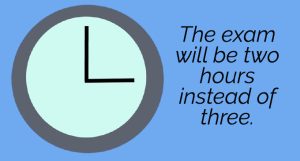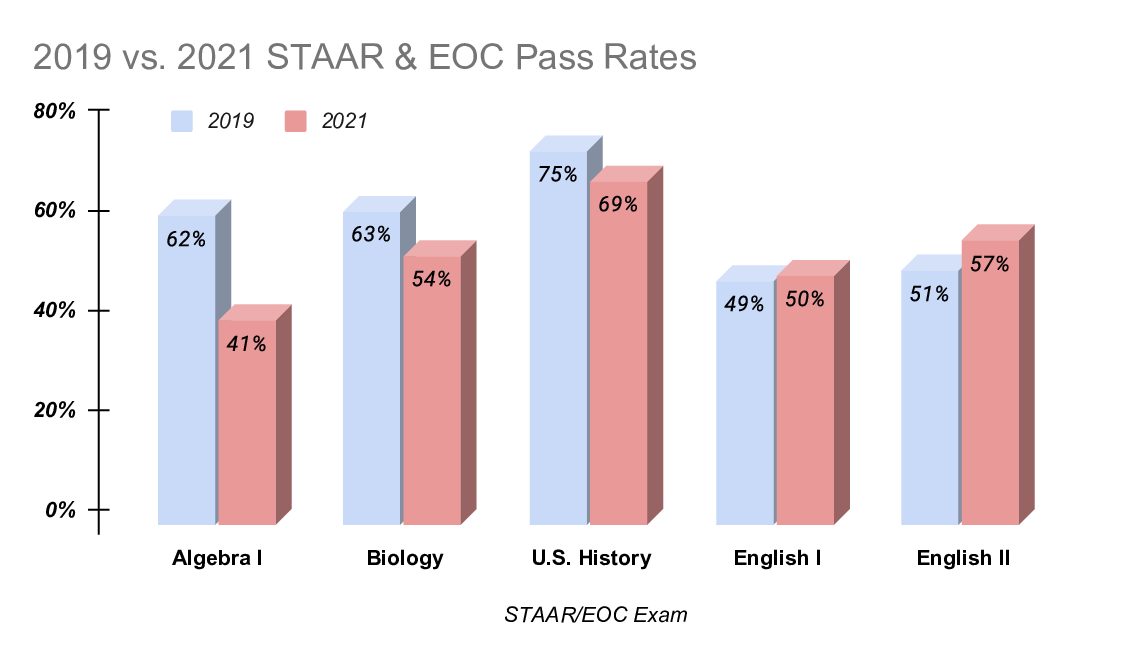SAT adaptations aim to benefit students, lessen stress
College Board to implement testing adjustments in 2024
Starting in 2024 in the States and 2023 internationally, the SAT will be shorter, digitally administered and allow testers to use a calculator throughout the entire math section.
April 17, 2022
College Board announced on Jan. 25 that the SAT will change in 2024 in the United States and in 2023 internationally in order to improve the exam’s proficiency and student performance.
College Board’s new version of the SAT has been adapted from paper to digital, and the exam will be two hours instead of three. In addition to the streamlined format, calculators will be permitted on the whole math section as opposed to a non-calculator and calculator section. The reading passages have been shortened, and only one question will be assigned per excerpt.

According to College Board Newsroom, “In November 2021, College Board piloted the digital SAT in the U.S. and internationally; 80% of students responded that they found it to be less stressful, and 100% of educators reported having a positive experience.”
Senior Gage Sanchez has taken the original SAT four times. He feels that the structure of the exam is not an accurate indicator of intelligence as the time constraint causes students to struggle.
“Being good at taking the SAT is something you are born with,” Sanchez said. “It’s a timed test with a large amount of questions that unless you can rapid-fire some answers, you really can struggle. I studied heavily for each time that I took it, and after every test, I knew that my biggest hardship was time.”
Sanchez thinks the amount of questions on the SAT is disproportionate to the time given.
“Now, while I think the test touches on the most important aspects of knowledge (mental math, English, writing, etc.), I think the test itself is quite lengthy,” Sanchez said.
 Concerning the SAT adaptations, Sanchez felt that they would largely improve student performance.
Concerning the SAT adaptations, Sanchez felt that they would largely improve student performance.
“If College Board reduces the amount of questions and provides students with more time, then I think proctors and administrators will see a drastic improvement in SAT scores,” Sanchez said.
Freshman Max Meisel offers a new perspective as he will be taking the adapted SAT in 2024. He too feels that the new version will allow him to perform better on the exam because of its reduction in length and newfound flexibility.
“I would be able to pay attention for longer without having to take breaks in the middle,” Meisel said. “Three hours is kind of a lot to not move around, but two hours is fine.”
In regards to the calculator change, Meisel believes it would ease the pressure students feel to perform well on the test, as the SAT is a prominent factor in the college admissions process.

“I think that knowing how to do math without a calculator is helpful, but I don’t know if it should make or break your chance of getting into college,” Meisel said.
When it comes to how the changes will affect the chances of students getting into their desired colleges, college and career counselor Camille Nix feels that this will be complex.
“This is tricky, because so many colleges are test-optional, and I am not sure how well that will play out over the next few years,” Nix said. “I guess the hope is that SAT scores will more closely show what students know rather than how well they test.”
Overall, though, Nix is confident that the changes will only help students.
“The idea behind the changes is to create a more equitable testing situation, lessen the stress behind the length of the test and decrease stress among school administrators who spend hours upon hours preparing score sheets, test booklets, etc.,” Nix said. “I think the hope is that with a shorter format, use of a calculator and adaptive questions that better suit each students’ abilities, scores will improve.”
 Nix also views the changes as beneficial to students in the context of changes to the U.S. education system overall, which has come to favor a digital format in recent years for the completion of schoolwork.
Nix also views the changes as beneficial to students in the context of changes to the U.S. education system overall, which has come to favor a digital format in recent years for the completion of schoolwork.
“Students today are digital users,” Nix said. “Schoolwork is completed in a digital format, and the workforce is the same way. To me, moving to a digital test has its advantages in that way. Students are used to taking tests digitally and will be expected to do so at the next level.”








Augustina Weber • May 27, 2022 at 7:42 pm
I really liked the transition from paper to digital testing, as I find it helps me work more efficiently and reduces hand cramping!
Martha Pruitt • May 16, 2022 at 11:17 am
I thought this story is really interesting because I wont have to take the SAT for four years, and they might add more positive changes to the test by the time I have to take it.
Joaquin Kinard • May 15, 2022 at 1:38 pm
I really liked this story because it included really nice graphics that contributed well with the tone of the article. Since I am only a freshman the changes could be removed before it is my turn to take the SAT.
Camilla Vandegrift • May 6, 2022 at 11:27 pm
I think this story covers the news topic well with helpful graphics that explain the basic changes that will be made to the SAT. As a freshman, these changes might affect me. I am taking the SAT tomorrow and I may take the revised version sometime in the future, so it will be interesting to see how they compare if I happen to take both. I hope that this new test is indeed more indicative of people’s abilities and less stressful for them.
Lemuel Winesett • May 4, 2022 at 8:37 pm
I really like how the College board is actually taking students mental health into consideration by revising their tests. I think it will definitely make it easier on students and teachers. I do still believe that it is not a good representation of our intelligence.